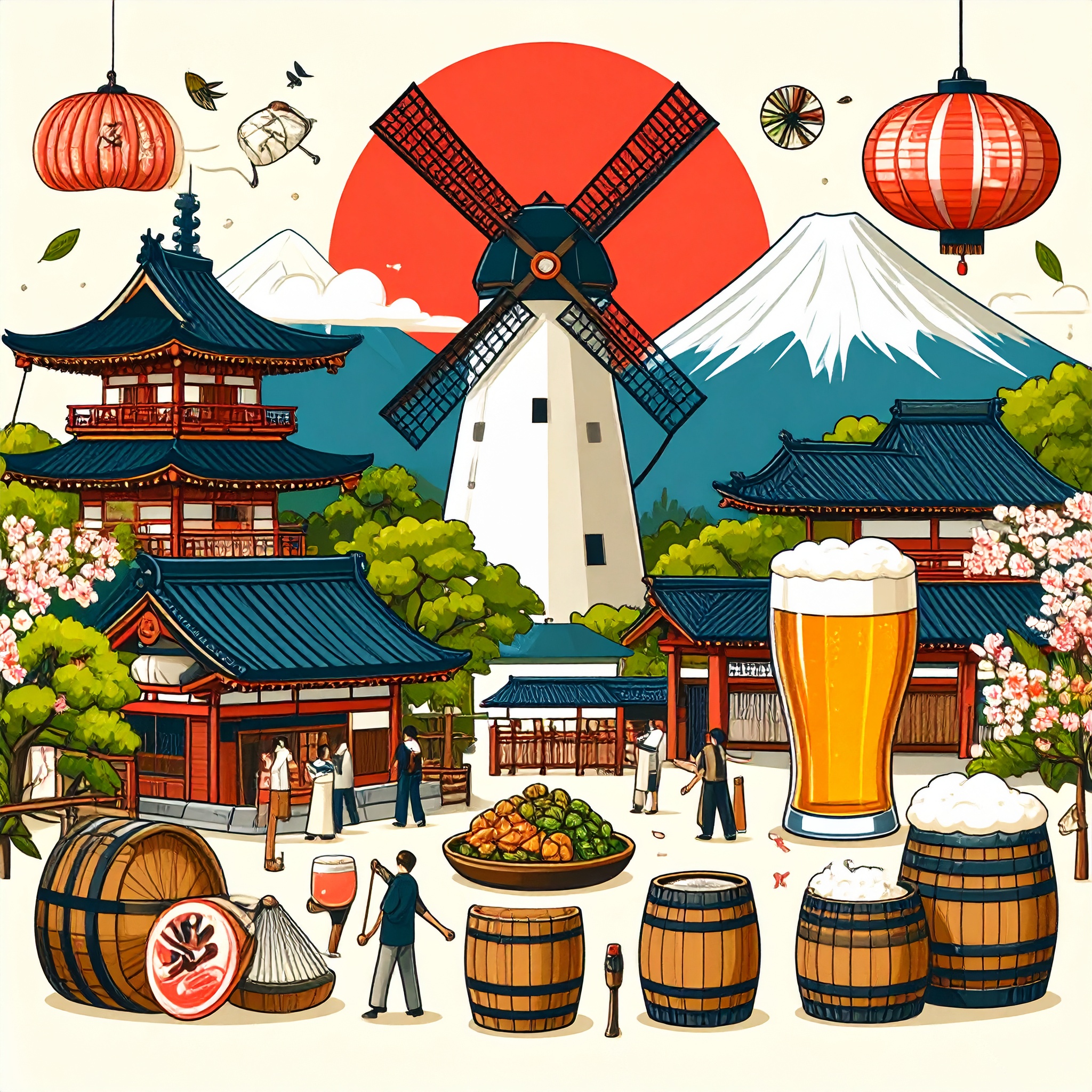In the global culinary world, fermentation is quietly emerging as the next refined frontier. While fermented foods like yogurt, cheese, kimchi, and sauerkraut are celebrated worldwide, Japan’s fermentation culture stands out for its subtlety and complexity. Miso, soy sauce, rice vinegar, sake, natto, and pickles—all are crafted through the patient art of fermentation, each carrying deep, layered flavors developed over time.
Fermentation is the process of enhancing nutrition and flavor through the action of microorganisms. In Japan, this practice has long relied on a harmonious balance between nature’s power and human intuition. At the core of Japanese fermentation lies koji, a mold cultivated on grains such as rice, barley, or soybeans. This living ingredient is the foundation of nearly every essential element in Japanese cuisine—miso, soy sauce, mirin, amazake, and sake among them.
Today, this koji-based fermentation culture is experiencing a quiet renaissance on the world stage. Behind this trend is a growing global desire for health-conscious and naturally produced foods. Unlike mass-produced goods, fermented products developed without preservatives or artificial additives offer gentle nourishment and rich, complex taste profiles. Their benefits for gut health and overall wellness have made them increasingly prominent in fine dining establishments and superfood markets across Europe, North America, and Asia.

Among the many expressions of Japanese fermentation, two traditional condiments—miso and soy sauce—are attracting particular global attention. Miso comes in many regional varieties—rice, barley, and soybean miso—each distinguished by its color, aroma, and depth of flavor. No longer limited to traditional soups and stews, miso is increasingly used in sauces, dressings, and marinades, becoming an essential element in modern French and Italian kitchens alike.
Soy sauce, too, offers a world of variation: koikuchi (dark), usukuchi (light), saishikomi (double-brewed), and nama shoyu (raw) each contribute different notes of umami and complexity. Chefs around the world now regard it as a key finishing or seasoning element. Particularly prized are naturally brewed, long-aged soy sauces—fermented in wooden barrels for years—whose rich aroma and mellow salinity reveal a depth that continues to captivate discerning palates.
Behind the excellence of these fermented seasonings lies Japan’s unique climate and artisanal heritage. Fermentation is highly sensitive to temperature and humidity, and Japan’s four distinct seasons create an ideal environment for microbial activity. Moreover, traditional vessels made from natural materials—such as wooden barrels and earthenware—facilitate airflow and microbial cultivation, preserving the ecosystem required for authentic fermentation.
Sake, too, is a pinnacle expression of Japan’s fermentation culture. Made from just rice, water, and koji, its complexity lies not in its ingredients but in its method: a sophisticated process known as parallel multiple fermentation. This dual-stage technique allows for a high alcohol content while preserving a delicate balance of sweetness, umami, and acidity. Much like French wine, sake now graces tables across the globe, celebrated for its elegance and versatility.
Yet Japan’s fermentation culture is not reserved for special occasions—it is also woven into the fabric of everyday life. Natto, tsukemono (pickled vegetables), nukadoko (fermentation beds), and amazake (a sweet rice drink) are just a few examples of fermented foods readily found in Japanese households. In recent years, this incorporation of fermentation into daily living has aligned seamlessly with global trends in wellness, slow food, and natural eating. Concepts such as “fermentation lifestyle” and kinkatsu (probiotic-focused living) are gaining traction internationally, bringing Japanese food culture to the forefront of a mindful, health-conscious way of life.

At the same time, a new wave of reinterpretation is breathing fresh life into Japan’s traditional fermentation culture. A new generation of fermenters and brewers is embracing time-honored techniques while introducing innovations in ingredients, methods, label design, and branding. Small-scale breweries and fermentation studios scattered across Japan are now forging collaborations with international partners—cultivating new global audiences and expanding the reach of this deeply rooted craft.
Fermentation has also become a compelling theme in cultural tourism. Across Japan, travelers can take part in sake brewery tours, miso-making workshops, or hands-on experiences in crafting nukazuke pickles. These immersive activities allow visitors to engage with tradition through the senses, turning fermentation into a meaningful and memorable cultural encounter.
Looking ahead, fermentation is poised to play a more vital role—not simply as a culinary method, but as a cultural bridge that connects people to nature, time, and their own senses. Its gentle health benefits and emotionally resonant flavors reflect a heritage steeped in wisdom, handcraft, and dialogue with the environment.
If fermentation is indeed the next movement in global cuisine, it is not a fleeting trend but a quiet revolution—one that calls us back to the origins of human nourishment. The aroma and depth of Japanese brewing culture are already beginning to captivate not just palates, but hearts, across the world.




